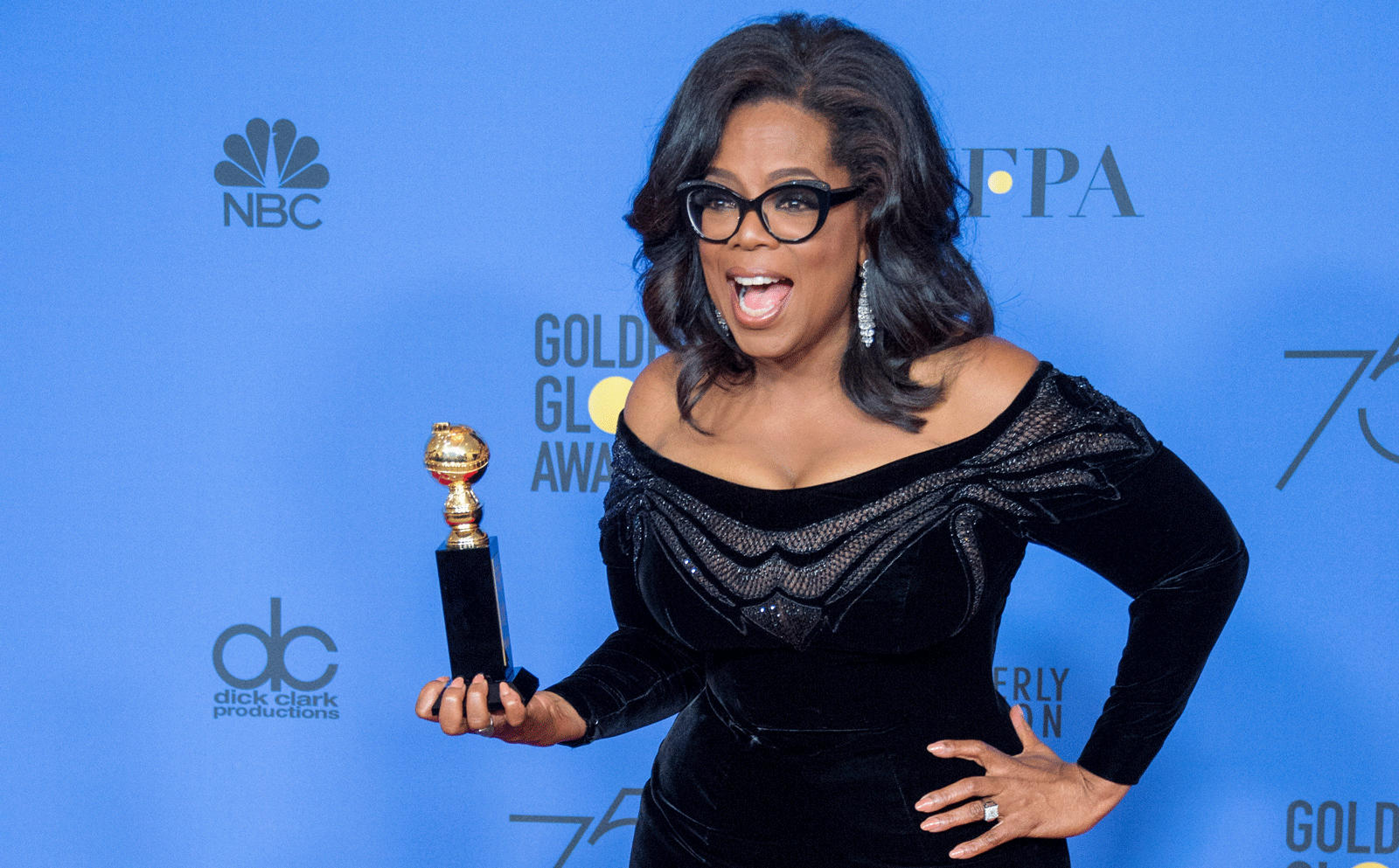
By Abigail Tenembaum and Michael Weitz of Virtuozo
When Oprah Winfrey spoke at the Golden Globes last Sunday night, her speech lit up social media within minutes. It was powerful, memorable and somehow exactly what the world wanted to hear. It inspired multiple standing O’s — and even a semi-serious Twitter campaign to elect her president #oprah2020
All this in 9 short minutes.
What made this short talk so impactful? My colleagues and I were curious. We are professional speaker coaches who’ve worked with many, many TED speakers, analyzing their scripts and their presentation styles to help each person make the greatest impact with their idea. And when we sat down and looked at Oprah’s talk, we saw a lot of commonality with great TED Talks.
Among the elements that made this talk so effective:
A strong opening that transports us. Oprah got on stage to give a “thank you” speech for a lifetime achievement award. But she chose not to start with the “thank you.” Instead she starts with a story. Her first words? “In 1964, I was a little girl sitting on the linoleum floor of my mother’s house in Milwaukee.” Just like a great story should, this first sentence transports us to a different time and place, and introduces the protagonist. As TED speaker Uri Hasson says: Our brain loves stories. Oprah’s style of opening signals to the audience that it’s story time, by using the opening similar to any fairy tale: “Once upon a time” (In 1964) “There was a princess” (I was a little girl) “In a land far far away” (…my mother’s house in Milwaukee.”
Alternating between ideas and anecdotes. A great TED Talk illustrates an idea. And, just like Oprah does in her talk, the idea is illustrated through a mix of stories, examples and facts. Oprah tells a few anecdotes, none longer than a minute. But they are masterfully crafted, to give us, the audience, just enough detail to invite us to imagine it. When TED speaker Stefan Larsson tells us an anecdote about his time at medical school, he says: “I wore the white coat” — one concrete detail that allows us, the audience, to imagine a whole scene. Oprah describes Sidney Poitier with similar specificity – down to the detail that “his tie was white.” Recy Taylor was “walking home from a church service.” Oprah the child wasn’t sitting on the floor but on the “linoleum floor.” Like a great sketch artist, a great storyteller draws a few defined lines and lets the audience’s imagination fill in the rest to create the full story.
A real conversation with the audience. At TED, we all know it’s called a TED talk — not “speech,” not “lecture.” We feel it when Sir Ken Robinson looks at the audience and waits for their reaction. But it’s mostly not in the words. It’s in the tone, in the fact that the speaker’s attention is on the audience, focusing on one person at a time, and having a mini conversation with us. Oprah is no different. She speaks to the people in the room, and this intimacy translates beautifully on camera.
It’s Oprah’s talk — and only Oprah’s. A great TED talk, just like any great talk or speech, is deeply connected to the person delivering it. We like to ask speakers, “What makes this a talk that only you can give?” Esther Perel shares anecdotes from her unique experience as a couples therapist, intimate stories that helped her develop a personal perspective on love and fidelity. Only Ray Dalio could tell the story of personal failure and rebuilding that lies behind the radical transparency he’s created in his company. Uri Hasson connects his research on the brain and stories to his own love of film. Oprah starts with the clearest personal angle – her personal story. And along her speech she brings her own career as an example, and her own way of articulating her message.
A great TED Talk invites the audience to think and to feel. Oprah’s ending is a big invitation to the audience to act. And it’s done not by telling us what to do, but by offering an optimistic vision of the future and inviting us all to be part of it.